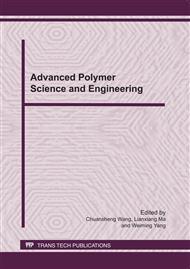p.629
p.635
p.640
p.644
p.649
p.657
p.662
p.668
p.674
Numerical Simulation of Shrinkage in the Microinjection Molding of Multi-Microparts Produced in one Mold
Abstract:
The aim of this paper is to verify the reliability of numerical results obtained by using MPI (Moldflow Plastic Insight) for predicting the shrinkage of multi-microparts produced in one mold in microinjection molding. 3D numerical simulation (control volume finite element method) was employed. Pure and 10-20 % GRF (glass fiber reinforced) POM materials were used for the plastic material. The injection molding process was used for different parameters (mold temperature, melt temperature and injection pressure). A DOE (Design of Experiments) technique was then used to plan the numerical simulation activity of the injection molding phase. Among injection processing parameters (mold temperature, melt temperature and injection pressure), the results showed that the mold temperature is the most important factor to affect the shrinkage of multi-microparts significantly for processing parameters. The results also indicated that the processing is very well for micro-injection molding by numerical simulation. In addition, properties of polymer composites with added fillers were systematically studied. Numerical simulation results showed that the numerical resulting composites with 10–20 wt% glass particles exhibited significant improvement in shrinkage, and showed good agreement with experimental results.
Info:
Periodical:
Pages:
649-656
Citation:
Online since:
March 2011
Authors:
Price:
Сopyright:
© 2011 Trans Tech Publications Ltd. All Rights Reserved
Share:
Citation:


